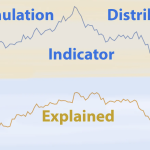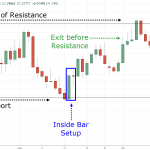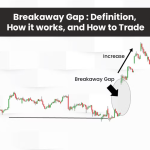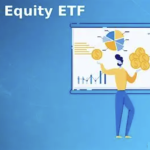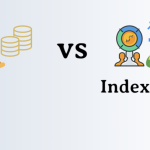
By ATGL
Updated April 24, 2024
When it comes to your company’s financial health, understanding the difference between profitability vs. profit is critical. Generally, economic profit is measured periodically on your business income and cash flow statements, while investors and analysts use ratios to evaluate your company’s profitability.
Calculating profit and profitability can help you identify areas in your business operations that can benefit from improvements. You can also evaluate how your company’s financial success compares with your competitors.
What You Need to Know About Profit
Every time your company issues financial statements, it calculates the profit or loss for the period. That amount represents whether the business earns more than it spends over a specific time frame, such as a month, quarter, or year.
Understand Income Statements
There are three types of profit margins calculated on the income statement: gross profit, operating profit, and net profit.
Gross profit is the amount remaining after deducting the cost of goods sold from revenues. The cost of goods sold consists of expenses directly attributed to the production and sale of your company’s products or services.
To calculate operating profit, you’ll deduct business expenses from gross profit. It includes fixed and variable costs, such as office rent, marketing, and administrative costs.
Finally, net profit is the remaining amount after deducting interest, taxes, depreciation, and amortization from operating profit.
How to Improve Profits
There are many ways to increase company profits. Some of the more common strategies include raising your prices, attracting new customers, and increasing existing client sales. A detailed and careful analysis of your income statement is essential for getting a clear view of your business operations.
You’ll need to sell more items, raise prices on existing products, or enhance your customer base to build revenue. Selling more items works if you know your customers well and can anticipate which products or services they are likely to buy. Raising prices can also increase revenues, but you may lose some customers unwilling to pay more for the same goods. Developing a more extensive customer base typically requires increased sales and marketing expenses but can pay off with a solid strategy.
If you decide to cut costs to meet your profit goals, you’ll focus on cutting unnecessary operating expenses that don’t add value to your bottom line. Reducing costs can also allow you to lower prices on your products or services, which may attract new clients.
What You Need To Know About Profitability
Profitability measures a company’s earnings after expenses. It’s critical for businesses to track their profitability to assess their financial performance, identify growth opportunities, and make strategic decisions. Several ways to evaluate profitability include profitability analysis, profitability ratios, and profitability models.
Profitability ratios are useful for management and analysts. They are financial metrics used to compare a company’s profits to its revenues, costs, and assets. The evaluation of profitability ratios can demonstrate an organization’s efficiency in generating income from its operations and assets.
Understand Common Profitability Ratios
A few common profitability ratios include return on assets (ROA), return on equity (ROE), return on capital employed (ROCE), and earnings per share (EPS).
ROA measures the efficiency of business assets used to generate revenue. To calculate it, simply divide net income before taxes by total assets and multiply the result by 100.
ROE evaluates the usage of shareholder’s equity to generate net income. To calculate it, divide net income by shareholders’ equity and multiply the result by 100.
ROCE considers total equity in relation to earnings before interest and taxes. It helps determine how efficiently your company uses its cost of investment to generate profits.
Finally, EPS expresses a company’s net income relative to outstanding shares.
Other profitability ratios you can use to measure profitability include the return on investment ratio and net profit margin ratio.
How to Improve Financial Performance
Boosting financial performance is a common objective for many organizations. Some general strategies for doing so include cutting costs, managing debt, and increasing revenues.
To reduce costs, start by examining your company’s current expenses and identify any wasteful spending. You can also look for opportunities to optimize your production processes or negotiate better deals with suppliers and vendors.
If the company has excess debt, it may be spending a large portion of its earnings on interest payments. Look for refinancing or consolidation opportunities, or consider the feasibility of debt repayment. Managers can also look for equity investments to pay off existing obligations.
Increasing revenues is possible by raising product prices, boosting sales volume, or expanding the current customer base. If feasible, management may consider introducing new products and services or entering additional markets.
Understanding your business’s current financial performance – by examining income statements and calculating profitability ratios – can help you choose strategies that fit best with your current situation.
Boost Stock Market Profits With Above The Green Line
Investing can help diversify your company’s income sources and increase profitability through dividends and capital gains. Start trading today with Above The Green Line’s exclusive membership, which includes day trading and swing trading alerts, plus long-term stock market sector investing strategies.
Sources:
Profit: Definition, Types, Formula, Motive, and How It Works (thebalancemoney.com)
How to Measure Business Profitability (uschamber.com)
Return on Equity (ROE) – Formula, Examples and Guide to ROE (corporatefinanceinstitute.com)
Return on Capital Employed – Learn How to Calculate ROCE (corporatefinanceinstitute.com)
Earnings per Share (EPS): What It Is & How It Works | Seeking Alpha
Improving financial performance: Priorities and goals | Deloitte Insights


